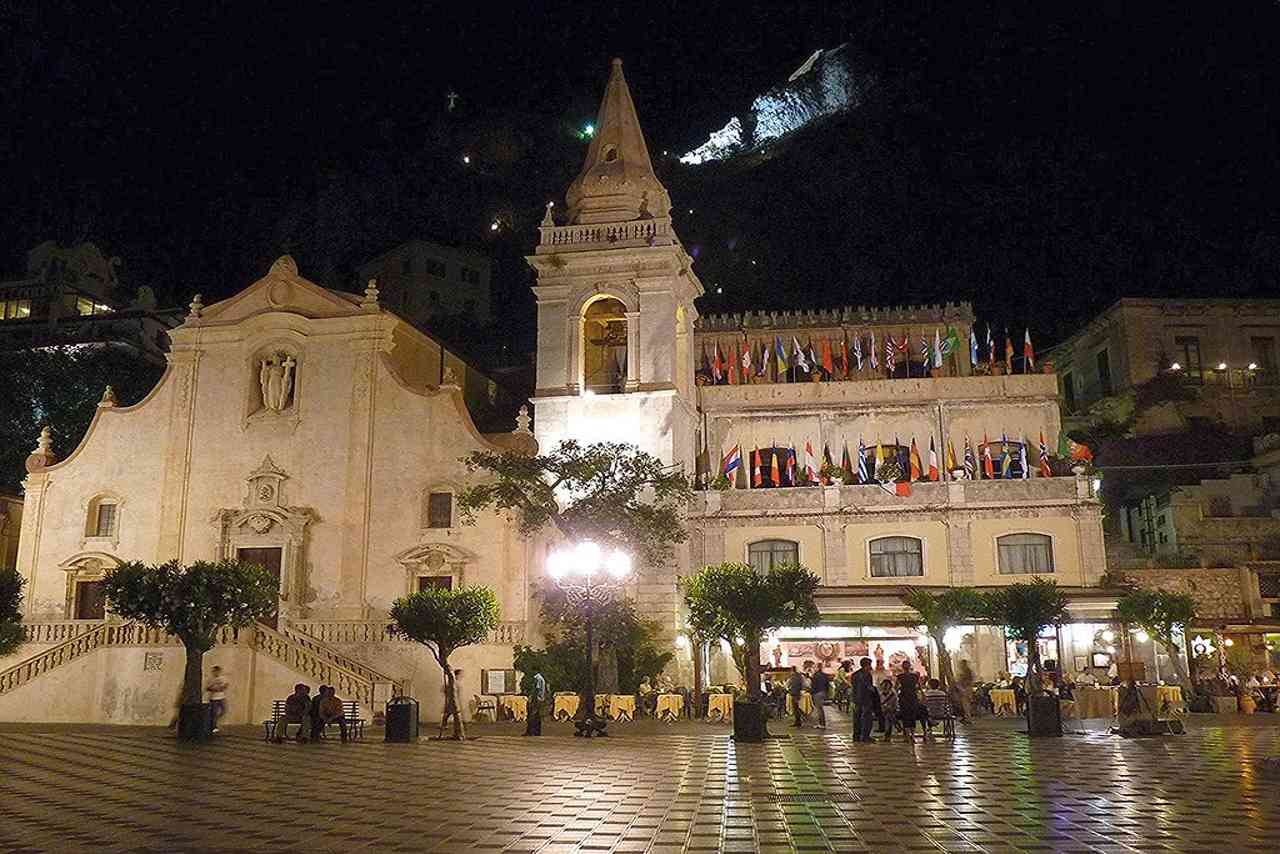Are you eager to learn more about everything related to Taormina’s historic center? Perched on the terrace of Mount Tauro, with breathtaking views of the Ionian Sea and the peak of Mount Etna, Taormina is known as the “Pearl of the Mediterranean” and is one of Sicily’s most famous tourist destinations.
Taormina will amaze you with its grand mix of archaeological remains, picturesque views, ancient palaces, meticulously maintained streets, and even wild nature. Moreover, while strolling along Corso Umberto I, you’ll have the chance to discover much of what the city has to offer tourists, and you can choose to end the day at the beach.
But beyond its beautiful beaches, this town will surprise you with its medieval village, ancient Greek soul, and the vibrant spirit of Sicily. We are confident that the best way to immerse yourself in the magical and romantic atmosphere of the city is by taking a stroll through the charming streets of the historic center.
Corso Umberto I is the main street that cuts through the center, connecting Porta Messina to Porta Catania. This cobblestone street, adorned with flowers, is perfect for purchasing typical Sicilian products like ceramics, lava stone jewelry, and delicious local wines. Corso Umberto is also the perfect starting point to venture into the alleys and admire the ancient palaces that still populate the city today.
A few minutes’ walk from Porta Messina will take you to the Ancient Theater, the iconic monument of Taormina. From its well-preserved steps, you can enjoy a breathtaking view of the Bay of Naxos and admire the bulk of Mount Etna rising above the waters of the Ionian Sea.
This theater, built around the 3rd century BC by the Greeks for dramatic and musical performances, was later converted into an arena for naval battles and gladiator combats by the Romans. Since the 1950s, the theater has hosted concerts, international events, theatrical performances, and much more.
What to See in Taormina’s Historic Center
Less famous than the Greek Theater is the Odeon, which remained hidden for a long time before being rediscovered in 1892 during maintenance work under the buildings of the historic center. Its remains, including three distinct parts: the stage, the orchestra, and the cavea, are a true testament to the city’s Roman past.
Finally, you’ll have time to visit Palazzo Corvaja, a true medieval fortress in Taormina. This splendid noble villa is located in the heart of Taormina, where the Greek agora once stood, later followed by the Roman forum. It incorporates various architectural styles, a sign of the different dominations the city experienced over the centuries.
To the original Gothic-style palace core, an Arab military tower was added, with Gothic-Catalan windows reflecting the Spanish Aragonese domination, while the hall that hosted the Sicilian Parliament in 1411 for the election of the King was built during Norman rule.







